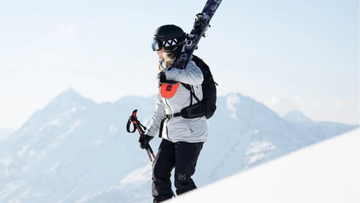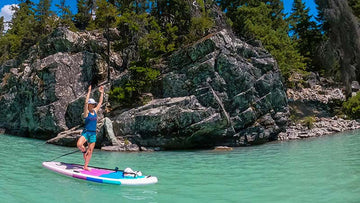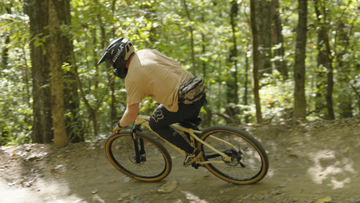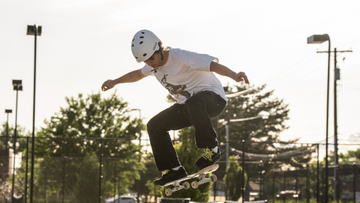Mountain Biking 101: Tips for Beginners
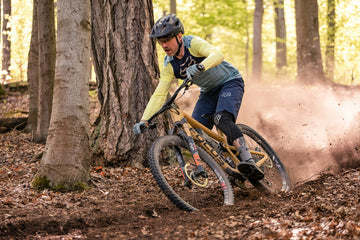

Summer is just around the bend and the trails are calling your name! Mountain biking is a great way to stay in shape, get into nature, and make friends. While dangerous at times, this thrilling activity is certain to spice things up. Can you handle a few bruises and scrapes?
There are mountain bike trails all over the world, which means all you need is the right bike and a hankering for adventure. Like any formidable sport/activity, mountain biking is best reserved for those who take the time to learn all there is to know. This article covers the basic essentials. From gear to skills to finding your riding community, this is your mountain biking crash course.
At Your Own Pace
Everyone learns at their own pace, and so should you. Mountain biking takes practice, which takes time, lots and lots of time. Practice makes perfect, right? Well, kind of.
Practice makes better, and the more time you spend on the trails, the better you’ll become and the more comfortable you’ll be taking on more challenging terrain. Just remember, this is YOUR mountain biking journey and you will progress at your own pace. For the sake of your safety, take it easy and enjoy the ride!
Decide Which Riding Style Best Suits YOU

Photo by Nathanaël Desmeules on Unsplash
There are different types of mountain biking. Those types require different specs and oftentimes different bikes altogether. Mountain bikes feature fat tires for increased stability and durability, and often include suspension systems to absorb shock from uneven terrain.
Trail Mountain Biking
This is the most common type of mountain biking. Trail mountain biking is a mixture of uphill and downhill riding, Trail biking is arguably the most leisurely type of riding style; however, that does not mean it is going to be a cakewalk. It’s best suited for groups, tours, and those who value fun over technicality. Trail mountain biking is typically where beginners start. That said, most trail areas cater to expert riders, too.
Cross-Country Mountain Biking
Cross-country mountain biking is less about variety and more about speed and technicality. This type of riding typically features trails with lots of climbs. This type of mountain biking often requires lightweight bikes, ideal for bikers who enjoy longer rides and a ravier vibe.
All-Mountain/Enduro Mountain Biking
Enduro mountain biking is almost the opposite. For those who enjoy going down more than climbing up, this style of mountain biking is perfect. While this type of riding still requires climbs (unless you’re at a ski resort with gondolas), it is more focused on those thrilling descents, drops, and technical features. This style of mountain biking has become increasingly popular among racers, and is widely regarded as the most dangerous of them all.
Gear Up (Enough)
After you figure out which bike and riding style is best for you, you’ll want to get the “right” gear. While it is widely debated what is considered “right,” here are the basics you’ll need if you plan on making mountain biking our next passion/hobby.

- Bike (what!?)
- Helmet
- Hydration pack or water bottle
- Protective eyewear
- First aid kit
- Gloves
- MTB friendly shoes
- Cycling socks
- Bike lock
- Headlight
- Padded shorts (if you plan on going hard)
Learn Track Signs and What They Mean
Before hitting the tracks, it’s important to memorize the signs you might see and what they mean. While many signs across America are different, they are typically the same ones ski resorts use.

Green typically indicates the trail is designed for beginners. These trails are flatter, less steep, and ideal for kids and riders getting confident on their pedals.
Blue is intermediate riders. This is where the terrain starts to get steeper, and more technical. Blue trails are typically still beginner-friendly, but they are certainly more difficult than greens.
Black diamond is typically reserved for expert riders. These trails may include steep trails with tight tights, big drops, difficult climbs, and extremely technical areas that beginners should avoid at all costs.
Double black diamond trails typically signify the hardest terrain available. This terrain boasts the most difficult steeps, turns, drops, climbs, etc. If you are a beginner and find yourself on a double black diamond trail, best to get off your bike and walk.
Start Easy, Build Confidence, and Challenge Your Abilities

Photo by Lachlan Cruickshank on Unsplash
Becoming a better mountain biker requires gaining confidence and putting your skills to the test. It’s a good idea to get comfortable on trails you know you can master. That said, you will only improve as much as you push the limits of your mountain biking abilities. After mastering the green trails, switch to the blues and begin testing your skills there. Keep on moving up. Test your skills, hit jumps, burn through turns, and enjoy the thrill of toeing the line. It’s going to take blood, sweat, and maybe even tears!
However, it’s important to gauge your abilities and not to test your skills too much. You don’t want to damage your bike and you certainly don’t want to damage your body.
Ride Hard – Rest Harder

Your path to becoming an expert mountain biker is bumpy. Literally, it’s bumpy. Mountain biking is one of the most physically demanding activities people do, and it’s going to take a toll on your body unless you rest just as hard as you ride. Riding uphill for hours and then absorbing the shock of riding down can cause your glutes, thighs, and forearms to become incredibly sore (strong too!).
If you want to rest just as hard as you ride, get lots of sleep, take days off from mountain biking, and take ice baths when your muscles are sore.
Find Your MTB Community!
Mountain biking is more fun when you can do it with others. If you’re looking for new friends, there are plenty of mountain bikers that feel the same way. Below are some resources to get to know other mountain bikers in YOUR community.

Photo by Gabriel Porras on Unsplash
- r/MTB on Reddit: Reddit is a great place to get to know others. If you don’t mind doing some reconnaissance, take a look at the r/MTB page on Reddit to see if there are others just like you!
- MTBR Forums: While this website is heavily geared toward MTB reviews, there is an extensive community forum page that is ideal for getting to know other mountain bikers. The forum has over 500,000 members, so you won’t have a problem connecting with at least one!
- Singletracks: Singletracks is another forum website for appreciating and getting to know mountain bikers. This site features helpful tips, gear reviews, and more. Check out their community page to see how you can get involved!


